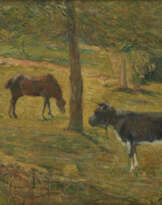ID 951142
Los 295 | Paul Gauguin
Schätzwert
€ 50 000 – 70 000
Title: "Parau hanohano".
Date: Ca. 1894.
Technique: Monotype on paper.
Mounting: Mounted to card.
Measurement: 48,5 x 34,5cm.
Notation: Monogrammed lower left: PGO.
Frame: Framed.
Verso:
Old adhesive label with title "Parole du diable".
Certificate:
Elizabeth Gorayeb, The Wildenstein Plattner Institute, New York 27.02.2023.
The work is listed in the digital catalogue raissoné in preparation.
Provenance:
Annemarie [Seidel] and Anthony van Hoboken, Vienna;
Annemarie Seidel, Berlin/Vienna/Munich, ca. 1933-59;
Inherited by family, Germany;
passed on as a gift to private ownership, Germany.
This work of art by Paul Gauguin reflects his longing for the lost paradise. A theme that basically preoccupied him all his life. It seems as if the artist, who was 46 years old at the time, put all his wealth of experience into this intense work on paper. Gauguin is convincing here in the extraordinary technique of monotype, in his choice of recurring figurative composition and his characteristic artistic handwriting. In this way, he arouses the viewer's curiosity, especially as the work is absolutely fresh on the market and has only been passed on through inheritance and donation for around 100 years.
Now, for the very first time, it has reappeared on the art market and we are pleased to offer you this extraordinary work. It inspires above all because of three exciting aspects.
First of all, the work shows us a hint of Paul Gauguin's adventurous life at the time of the work's creation.
The artist was born in Paris in 1848 and grew up in Peru for the first few years. This time left a lasting impression on him. Time and again, one finds references to Peruvian culture in his works.
As a young man, however, he initially decided on a career as a sailor and travelled to many different countries. Even then, he was clearly drawn to faraway places.
When he returned to Paris in 1872, he took up a job at a bank. He became a successful stockbroker and began to take an interest in art. When he was dismissed from the bank, he decided to devote his life to painting. At the age of 26, he takes painting lessons at the Académie Colarossi. It was at this time that he met fellow painters Camille Pissaro, Paul Cézanne and Edgar Degas.
In 1886, Gauguin stayed in Pont-Aven in Brittany. There he was active and respected within a circle of artists, but he did not succeed in selling his paintings. He was again seized by an inner restlessness. Gauguin longed to live in the tropics, in an exotic paradise far from Western constraints and constricting civilisation.
In 1891, the artist embarked for Tahiti. He does not find his paradise, but he succeeds in combining the disappointing reality with his colourful dream world. More than 60 paintings are created, a mythical world full of deliberately two-dimensional figures with strong colour contrasts.
With these expressive works in his luggage, Gauguin returned to Paris in 1893. His money was exhausted and he absolutely had to sell his paintings. However, he did not succeed. He found himself in an increasingly difficult financial situation. Our work, a monotype, was also created during this intense phase of his life.
And that is the second exciting point about this work of art, the extraordinary technique.
Monotype is a process in the visual arts that was invented as early as the 17th century. Instead of painting on paper or canvas, the artist paints on a smooth surface such as glass or metal. As long as the paint is still wet, the artist puts a piece of paper on top of it in order to print the motif. Since this can only be done once, the work is considered an original.
The work presented here is also such an original. Between 1893 and 1895, Paul Gauguin initially produced impressive woodcuts. At the same time, he experimented with the technique of monotype. He was fascinated by being able to switch between print, drawing and watercolour at will and thus achieve extraordinary results. Gauguin usually used very thin Japanese paper as backing paper, which absorbed the paint well, and then mounted it on thicker paper, sometimes on cardboard, to stabilise it. Finally, in the years from 1893 to 1895 - and indeed only in this period - he signed these works with a woodcut seal: the letters PGO for his name are framed by small animal images in a circle (see on our work below left).
Full of enthusiasm, he now exhibited these special works in his studio and was just as happy to give them away to his fellow painters, e.g. Edgar Degas or Aristide Maillol. Today, unfortunately, only very few copies of these exist. And that is why we are particularly proud to be able to offer this extraordinary work of art.
The motif and the type of depiction are also worth mentioning.
Gauguin liked to repeat scenes from other works in his various techniques. Thus he takes up the formal language of his painting, varies the motifs and lets the figures act in a new composition. For our work, for example, there is a pencil drawing for the main motif in the centre of the picture, as well as an ink brush drawing and finally a painting on canvas, which was probably destroyed during the Second World War (see cat. rais. Wildenstein 460). In contrast to the works mentioned above, the artist uses this monotype to almost exaggerate the two-dimensionality of the pictures. He takes artistic liberty and dispenses with any perspective; on the other hand, he plays with the abstraction of the pictorial spaces. Instead of a concrete landscape, he lets natural forms float freely in the pictorial space in different colours. And the depicted figures, be they the two women in the foreground, the spirits of the ancestors and the idol behind them, all appear remarkably calm and static. The dark contour reinforces the artistic intention. At the same time, however, the colours that run softly over the figures virtually immerse them all in a shared dream world.
With this work, Paul Gauguin succeeded in freeing himself from the reality of his current life's misery and, with incredible artistic freedom, depicted his personal dream world view, his lost paradise.
| Künstler: | Paul Gauguin (1848 - 1903) |
|---|---|
| Angewandte Technik: | Monotypie |
| Kategorie des Auktionshauses: | Aquarelle und Zeichnungen |
| Künstler: | Paul Gauguin (1848 - 1903) |
|---|---|
| Angewandte Technik: | Monotypie |
| Kategorie des Auktionshauses: | Aquarelle und Zeichnungen |
| Adresse der Versteigerung |
VAN HAM Kunstauktionen GmbH Hitzelerstr. 2 50968 Köln Deutschland | ||||||||||||||
|---|---|---|---|---|---|---|---|---|---|---|---|---|---|---|---|
| Vorschau |
| ||||||||||||||
| Telefon | +49 221 92586215 | ||||||||||||||
| Fax | +49 221 92 58 62 4 | ||||||||||||||
| Aufgeld | 32% | ||||||||||||||
| Nutzungsbedingungen | Nutzungsbedingungen | ||||||||||||||
| Geschäftszeiten | Geschäftszeiten
|
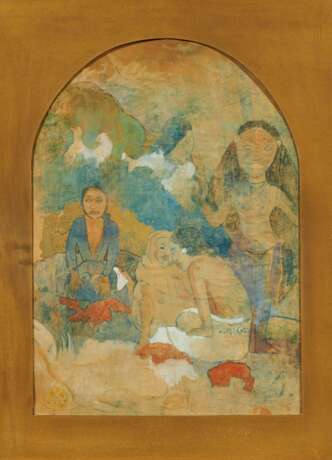
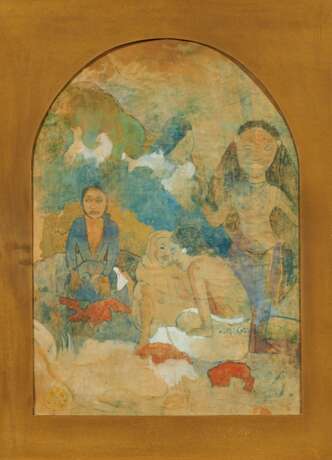

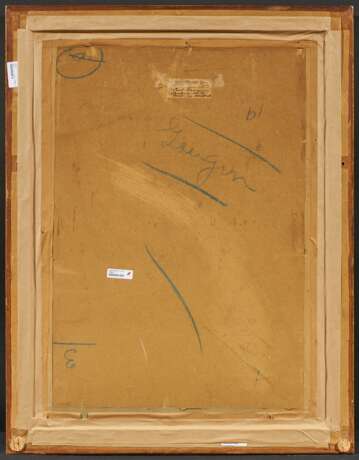
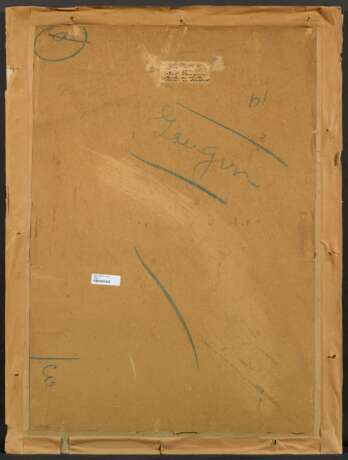
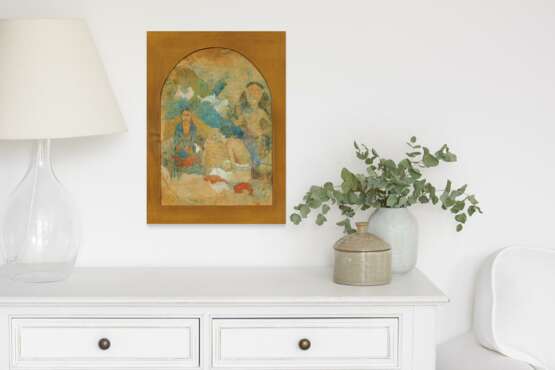

![[JARRY, Alfred (1873-1907) et Remy de GOURMONT (1858-1915), éd.]](/assets/image/picture_3807179/db0f3/9f8a9c9f9f96b44499182a8f6613e35b1710234000jpg__fix_162_205.jpeg)
![[REVUES]](/assets/image/picture_3807250/6bf13/dc3db82894376503e72508d2fd423b8b1710234000jpg__fix_162_205.jpeg)





